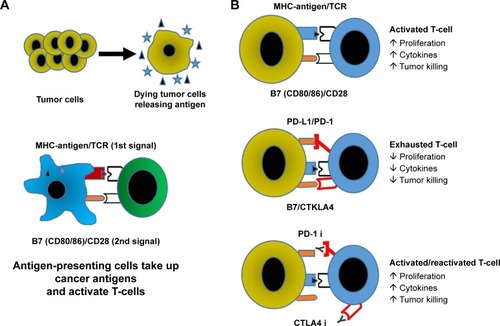Figures & data
Figure 1 Immune response to tumors.
Abbreviations: MHC, major histocompatibility complex; PD-1, programmed cell death-1; PD-L1, programmed death-ligand 1.

Figure 2 Escaping immune surveillance.

Table 1 Checkpoint inhibitors available in the USA and select inhibitors in advanced studies
Table 2 Review of select biomarker studies and their ability to enrich responding patient populations
Table 3 Ongoing trials of agents targeting the PD-1 or PD-L1 pathway for treatment of pediatric cancer
